
America's Heartland: Wheat Episodes
Browse a collection of short video clips about growing wheat.

Browse a collection of short video clips about growing wheat.

Meat isn't the only product that comes from beef cattle. The by-products of beef production are used to make numerous everyday items like lipstick, perfume, paint, crayons, leather balls, and more. This black line coloring sheet depicts cattle using items that come to us “compliments of cattle.” Students can color cattle doing things like playing basketball, repairing cars, and putting on lipstick. As they are coloring, students can check off the list of everyday items that are made from beef cattle by-products. Download the lesson plan "Beef Basics" for great classroom activities and a shopping list to create your own beef by-products kit.
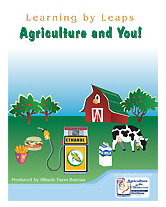
The stars of this DVD are 10-year-old girlfriends who are given an assignment to report on "where things we use every day come from." The students discover, with the help of a friendly farmer who magically "leaps" with the girls from the mall to farms, that the answer is agriculture. Agriculture is the source of products we eat, wear, use, and need every day. Order this DVD online from agclassroomstore.com.
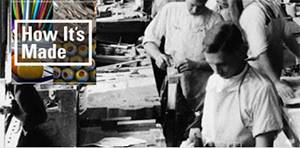
Although this television series is no longer being aired, the YouTube videos provide invaluable footage of factory production. A wide variety of foods and other products created from raw agricultural materials are explored in five-minute segments. Browse the "Food Collections" playlist to learn about a variety of foods from farm-to-fork.

In just under five minutes, this video shows how cotton is processed in modern factories. See cotton cleaned, carded, coiled, drawn, stretched, spun, and wound onto giant spools—all by machines. In 48 hours raw cotton is transformed into cotton yarn.
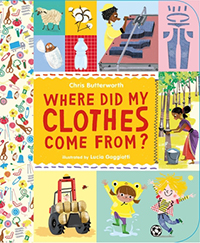
Did you know that the cotton for your jeans was picked from a plant? How did the colorful wool in your sweater get from a sheep’s back to a ball of yarn? Where did your soccer uniform, your rain boots, and your fleece jacket come from? And what does recycling plastic bottles have to do with anything? This book will take you to visit farms, forests, and factories all over the world to find out how everything you wear has a story behind it. The fabrics covered include denim, wool, and synthetics, and suggestions on how to recycle or repurpose old clothes are also provided.
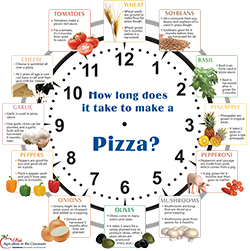
This 42" x 42" bulletin board uses the skill of "telling time" to help students understand the time it takes to grow, process, and produce the ingredients of a pizza. It can easily be used to teach concepts of time, community involvement, raw to finished products, careers, and much more. The hands of the clock are movable. An activity sheet is included to demonstrate to students just how long it really takes to make a pizza. You'd be surprised! Order this bulletin board online from agclassroomstore.com.
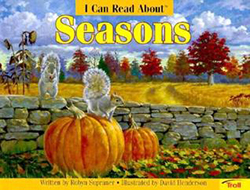
Colorful illustrations and clear text make this an excellent book for introducing young students to key concepts like what each of the four seasons are like and how they are created by the orbiting of Earth around the sun.
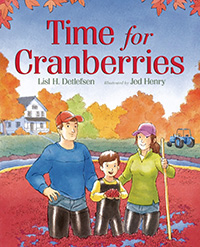
From the cranberry bog to the Thanksgiving table, join Sam and his family as they harvest a classic American fruit. When the vines hang heavy with berries that the autumn winds have turned deep red, it's time for cranberries, and Sam is finally old enough to help with the harvest! This charming, lyrical picture book follows Sam and his family as they raise the water in the bog, pick the cranberries, and gather the fruit for processing. It's a story of modern family farming in action, showing readers where their food comes from but mostly delighting them along the way. This book is a great companion to lessons on farming, harvesting, use of machines, Thanksgiving, or cranberries.
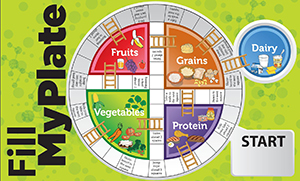
Test your students’ understanding of nutrition with this exciting, fast-paced board game. Students take turns rolling a die, moving to different sections of the MyPlate board, and answering basic trivia about healthy eating and food science. The first to “fill their plate” with one trivia card from each section (Fruits, Grains, Vegetables, Protein, and Dairy) wins! In-game bonuses encourage students to exercise, reinforcing personal choice as an important component to a healthy lifestyle. Each gameboard comes with materials for up to five students. Available for purchase or free download. Order this game online from agclassroomstore.com.
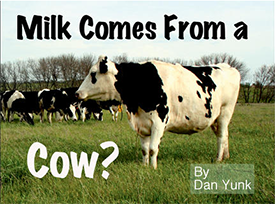
Follow the travels of Kailey as this city girl visits a dairy farm to learn where milk comes from. Gather trivia about milk along the way and take a tour of a milk processing plant. This educational story offers a fun way for young people, parents, and teachers to learn more about agriculture. The book, sponsored by the Kansas Farm Bureau, is now available for download from their website as part of an app that comes complete with a host of bonus features and videos.
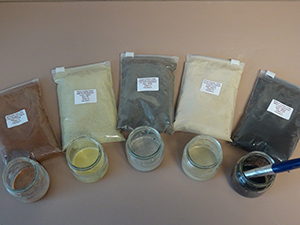
This kit includes five Utah soils that have been finely ground and sifted for use as paint pigments. Each soil is labeled with the name of the Utah county from which it was collected, the soil type and order, and the color of the soil classified by hue, value, and chroma. Use this kit with the Color in the Garden lesson plan, which provides instructions for painting with soil-based pigments. Order this kit online from agclassroomstore.com.